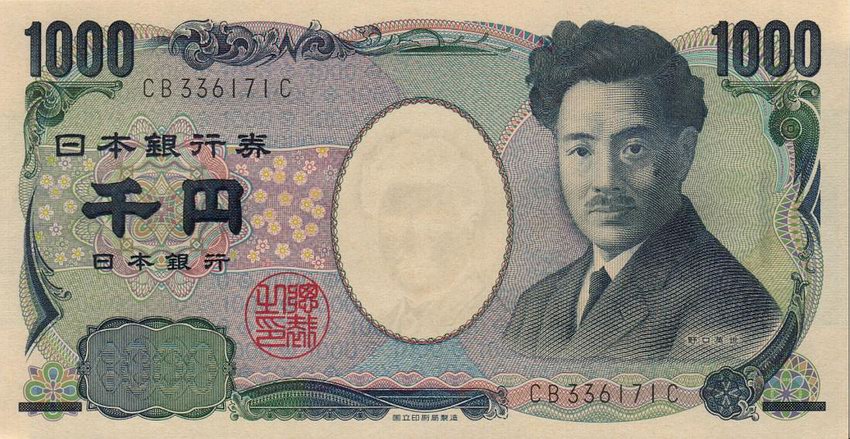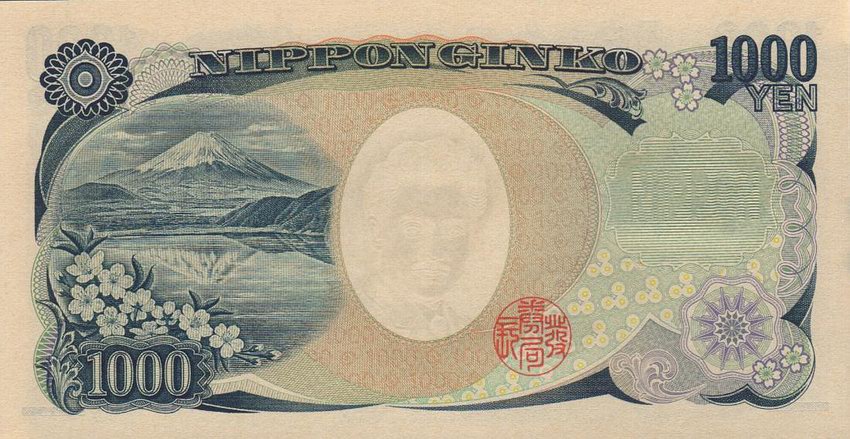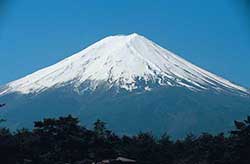Of Scientists and Mountains: Hideyo Noguchi

Todays discussion is in regards to the 2004 1000 Yen banknote from Japan, pick numbers 104a, 104b and 104c.


This banknote, which was issued by the Bank of Japan (aka the Nippon Ginko), prominently features the bacteriologist Hideyo Noguchi on its front and a scene of the great Mount Fuji on its reverse.
 Noguchi was born on November 24, 1876 in Inawashiro, Fushima in the Empire of Japan and at a young age of 1 1/2 years old found himself in the fireplace which lead to the disfigurement of one of his hands. Not letting this stop him, he later graduated from Saisei Gakusha, modern day Nippon Medical School and with a degree in hand he moved to the United States in 1900. Originally working with Dr. Simon Flexner at the University of Pennsylvania, Noguchi eventually found himself working for the Rockefeller Institute of Medical Research.
Noguchi was born on November 24, 1876 in Inawashiro, Fushima in the Empire of Japan and at a young age of 1 1/2 years old found himself in the fireplace which lead to the disfigurement of one of his hands. Not letting this stop him, he later graduated from Saisei Gakusha, modern day Nippon Medical School and with a degree in hand he moved to the United States in 1900. Originally working with Dr. Simon Flexner at the University of Pennsylvania, Noguchi eventually found himself working for the Rockefeller Institute of Medical Research.
Nominated for the Nobel prize for both Physiology and Medicine, Noguchi was seen as a rising star but modern historians have called into question this glowing review. For example, in 1911 Noguchi was accused of inoculating orphan children with syphilis. Although acquitted at the time, contemporary 20th century lawyers use this specific case as an early instance of unethical human experimentation. Despite these transgressions, in 1913 Noguchi discovered that the bacteria Treponema pallidum, a relative of the bacteria which causes syphilis, was present in patients who suffered from progressive paralysis and his discovery would be used to ultimately lead to the treatment of syphilis itself.
Noguchi spent the rest of his life in British Ghana attempting to develop a cure for Yellow Fever. Despite his best attempts Noguchi instead developed a treatment for leptospirosis, which although having many of the same symptoms, was miscorrectly labeled as Yellow Fever by Noguchi. Ironically, in his search of a cure he died of the very illness he sought to cure dying in Accra on May 21, 1928 at the age of 51. Noguchi is seen as a very controversial figure in modern medicine, and is know for his discovery of the cure for syphilis and leptospirosis, and his innovation of using snake venom in vaccines. He is equally well know for his reckless experimentation practices and his love of working in isolation. However you see him, he is indeed noteworthy.
 Most people who have heard of Japan have probably also heard of Mount Fuji. This mammoth stratovolcano stands at a staggering 3776m (12 389ft) making it Japan's largest mountain. One of the three Holy mountains, along with Mount Tale and Mount Haku, Mount Fuji has one of the most notorious forests in the world, Aokigahara, more commonly referred to as the Suicide Forest which is the preferred place of death for many Japanese people looking to end their own life. The amount of suicides in this place is so high that officials have plastered the forest with signs urging suicidal visitors to seek help and to not kill themselves, and listing local suicide hotline numbers.
Most people who have heard of Japan have probably also heard of Mount Fuji. This mammoth stratovolcano stands at a staggering 3776m (12 389ft) making it Japan's largest mountain. One of the three Holy mountains, along with Mount Tale and Mount Haku, Mount Fuji has one of the most notorious forests in the world, Aokigahara, more commonly referred to as the Suicide Forest which is the preferred place of death for many Japanese people looking to end their own life. The amount of suicides in this place is so high that officials have plastered the forest with signs urging suicidal visitors to seek help and to not kill themselves, and listing local suicide hotline numbers.
Interestingly, the summit of Mount Fuji was actually forbidden to women until the Meji Era. The gaint still pierces through the Tokyo skyline and has been a UNESCO cultural heritage site since 2013. The designation of a cultural hertiage site rather then a natural hertitage site is tied to the mountains inspiration, which is reflected by many artists and poets over the centuries. Indeed these artists have carved Mount Fuji into the hearts and minds of the Japanese population, as well as many others from abroad. This makes the man, mountain, and money truly noteworthy!





